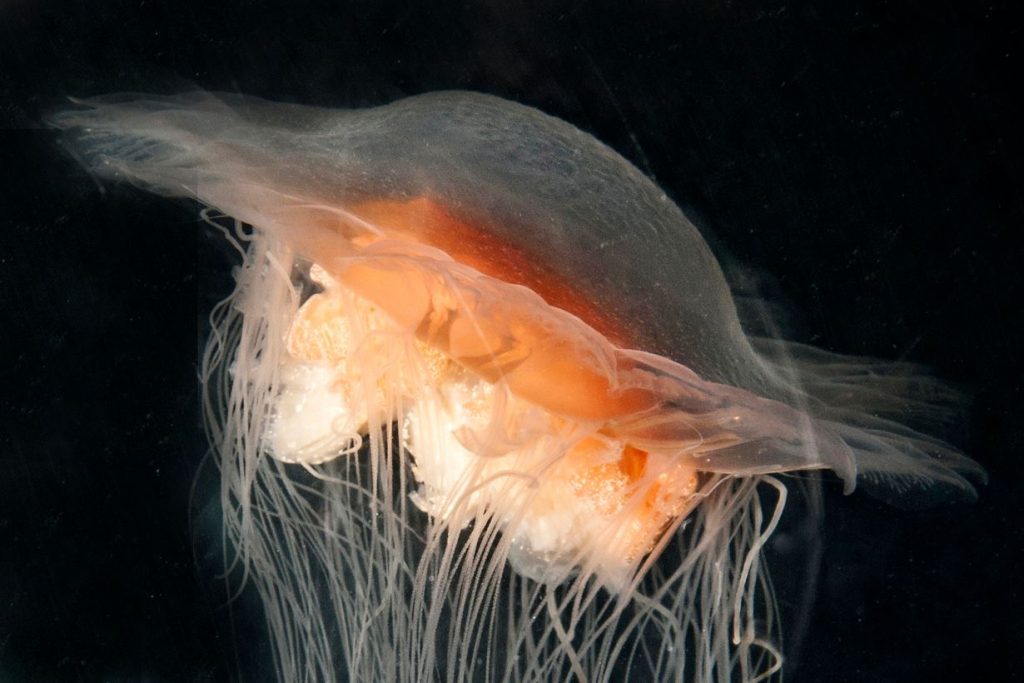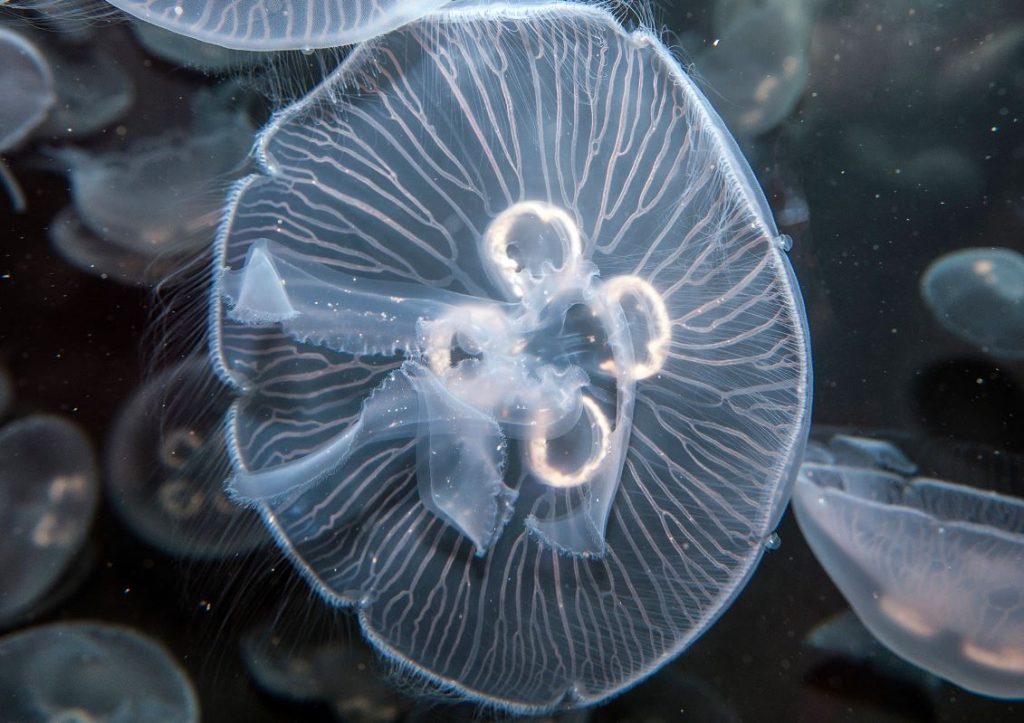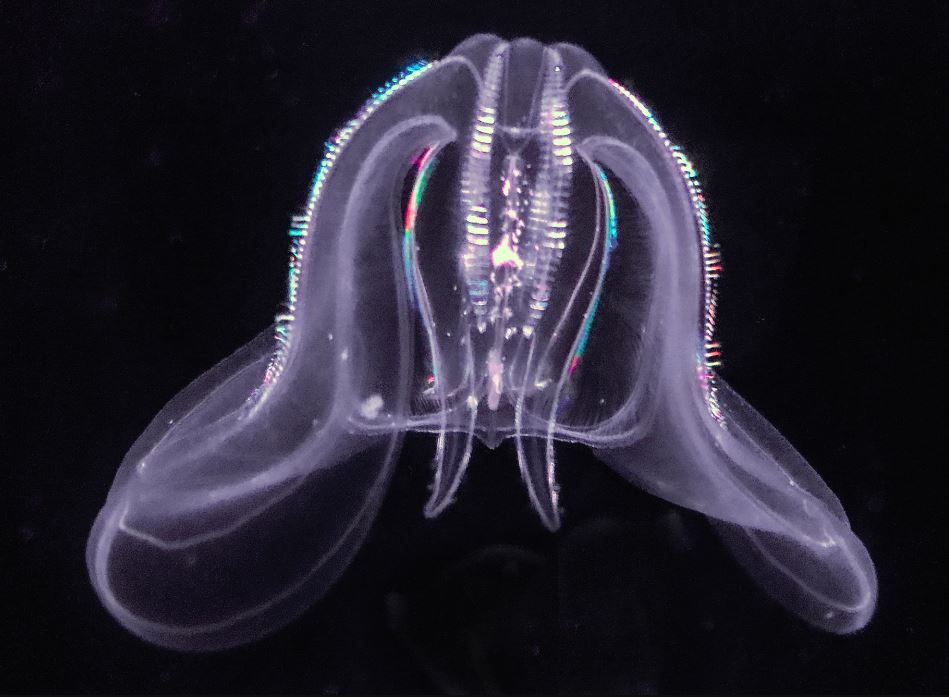Photos: © 2020 by Robert Michelson
The air outside is brisk but the ocean waters around Delaware are still warm. Are you planning to go swimming or surfing? If so, you may encounter jellyfish because they love warm water. And there are several species of jellies you should keep a watchful eye on as you venture out for a dip.

The largest jellyfish found in our waters is the lion’s mane. In fact, it is the largest known jellyfish species in the world. They got their name because their bright, trailing tentacles look like a lion’s mane. They’re also easy to spot because of their orange color. They can be as large as 6 to 12 inches across at the bell, or the rounded part you see at the top.
The largest lion’s mane ever found was on a beach in Massachusetts Bay in 1870. The bell measured 7 feet, 6 inches across, and the tentacles were 120 feet long.
The lion’s mane uses its stinging tentacles to capture, pull in and eat fish and smaller jellyfish that get too close to their tentacles. The stinging cells are not known to be fatal to people. But the sting site will be very red and painful.
So, what eats the lion’s mane jellyfish? Sea birds, giant ocean sunfish, sea turtles and other jellies will feed on them.
The Atlantic sea nettle is carnivorous, meaning it will eat other jellyfish and crustaceans like crabs, lobsters and shrimp. Their mouths are located in the middle of their bodies near the bell and are attached to a stomach-like opening used for munching their prey.
This species is somewhat clear, with small white dots and reddish-brown stripes. Their sting is strong to severe, but not deadly to humans. However, it will also hurt.
The predators of the sea nettle are mostly sea turtles, ocean sunfish and larger jellyfish.
I’ve Been Stung by a Jellyfish! What Should I Do?

The moon jellyfish is one of the coolest jellies because it looks like an underwater flying saucer and lights up at night. Moon jellyfish are clear in color and average about 6 to 8 inches in diameter. Larger moon jellies have been known to grow as large as 20 inches across at the bell. They have four horseshoe-shaped reproductive sacs in the center of their bells and short tentacles.
Moon jellies are usually found from early June to October, when they show up in harbors and bays looking like a wall-to-wall blanket of flying saucers.
They feed on plankton and mollusks, like snails, whelks and conchs, using their tentacles to pull in their victims. They are only able to move slightly by themselves, so they rely on ocean currents by pulsing and relaxing their bells.
They don’t have strong enough stinging power to penetrate our skin, but if you happen to get brushed by one, you will feel a minor stinging sensation.
Ocean sunfish and sea turtles like to snack on them.

Have you ever seen a sea walnut? They’re not true jellyfish, but Ctenophores, or comb jellies. Their population changes with each season but they can be found swimming along our coast all year. Don’t worry if you do see one because they’re harmless to people.
A sea walnut is shaped just like its name and is transparent or white. They can grow up to several inches long but adults don’t have tentacles. Sea walnuts give off a rainbow spectrum of colors when disturbed by a light source. At night, they can be seen “flashing” brightly in the waves of passing boats. They move through the water by using eight rows of hair-like structures, or combs.